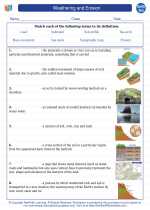Curved Mirrors
Curved mirrors are mirrors with a curved reflecting surface. They can be concave (curves inward) or convex (curves outward). These mirrors are used in various optical devices such as telescopes, microscopes, and mirrors used in cars and makeup. Understanding the properties of curved mirrors and how they reflect light is essential in understanding how these devices work.
Types of Curved Mirrors:
1. Concave Mirrors: These mirrors curve inward and can produce both real and virtual images, depending on the position of the object relative to the mirror.
2. Convex Mirrors: These mirrors curve outward and always produce virtual images. They are commonly used as safety mirrors in stores and parking lots.
Key Concepts:
1. Focal Point: The point at which parallel rays of light either converge (for concave mirrors) or appear to diverge from (for convex mirrors) after reflection.
2. Focal Length: The distance from the mirror's surface to the focal point.
3. Principal Axis: The line passing through the center of curvature, the focal point, and the vertex of the mirror.
Study Guide:
When studying curved mirrors, it's important to understand the following concepts:
- Identify the differences between concave and convex mirrors in terms of their reflective surfaces and the types of images they produce.
- Understand the relationship between the focal point, focal length, and the curvature of the mirror.
- Learn how to use ray diagrams to determine the location and nature of the images formed by curved mirrors.
- Practice solving problems involving mirror and image distances, magnification, and other related calculations.
- Explore real-world applications of curved mirrors and how their properties are utilized in various optical devices.
By mastering these concepts, you'll be able to understand the behavior of light when it interacts with curved mirrors and how to analyze and predict the formation of images in different situations.
Remember to practice with different types of problems and seek clarification on any concepts that may be challenging. With time and effort, you'll develop a solid understanding of curved mirrors and their applications.
.◂Earth Science Worksheets and Study Guides High School. Weathering and Erosion
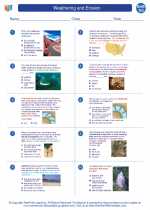
 Worksheet/Answer key
Worksheet/Answer key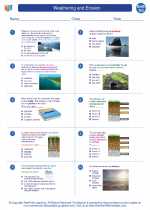
 Worksheet/Answer key
Worksheet/Answer key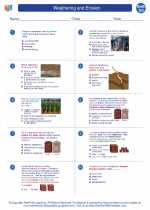
 Vocabulary/Answer key
Vocabulary/Answer key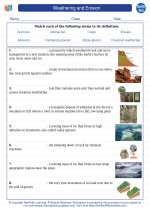
 Vocabulary/Answer key
Vocabulary/Answer key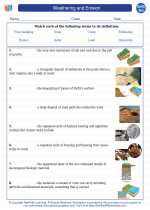
 Vocabulary/Answer key
Vocabulary/Answer key